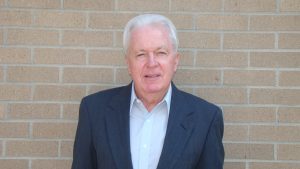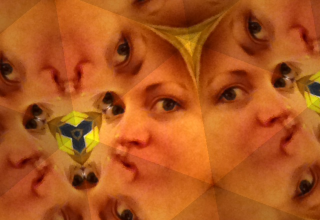
The challenges where we applied Divergent Collaboration℠ were long-standing programs, but there are certainly benefits to using Divergent Collaboration℠ on brand new problems. While it can be applied at any time during the life of a project, challenge, or opportunity, employing the process as early as possible is a particularly effective and efficient use of this technique. Not only is there more freedom to pursue new directions, but the problem definition phase of a new problem is often much less expensive in terms of dollars, hours, timeliness and opportunity costs than the solution phase.
In any case, the process definitely shakes up a project and the potential negative consequences of this need to be acknowledged. The negative side arises from the fact that this technique will open up some new thinking that may be uncomfortable for the problem owner and the existing project team. The divergent aspect of this process will stimulate, on purpose, a change in thinking, some possible new paradigms, a potential need to change direction and at a minimum, a new look at the challenge. All of these elements require the acceptance of change as a possible outcome, and the project team needs to be open to dealing with these changes.
For the problems that we put through the process – Information Visualization, Resiliency, Human Performance Augmentation, and Man-Machine Teaming – Divergent Collaboration℠ yielded very significant and innovative results and stimulated creative new approaches and strategies. Some results include: new ways to deliver critical information to decision makers using artistic, multi-media, music and choreography for information visualization; holistic and neuropathic approaches to provide care for service personnel before, during and after high-intensity situations for better resiliency; augmentation of operator performance by integrating traditional neuroscience techniques with alternative approaches such as acupuncture, electromagnetic stimulation and tonal changes to maintain alertness; and consideration of generational differences as a guide to the development of advanced automated systems by Baby Boomer and Gen-X engineers for use by Gen-Y users.
Additionally, the Divergent Collaboration℠ project on Man-Machine teaming resulted in the investigation of innovative approaches to situation awareness and minimally invasive procedures being used in robotic surgery for application to Unmanned Air Vehicles in high-intensity, high impact warfighting situations requiring precision strike. These non-traditional approaches were developed by participants from a variety of professions; the Divergent Collaboration℠ teams included an astronaut, an orchestra conductor, a Catholic Brother, a US Navy Seal, a spy trainer, a special education teacher, a university softball coach, a robotics surgeon, and a Peace Corps worker who had just served in a remote African village, to name a few. These individuals were able to make connections that might otherwise be missed by people that have preconceived biases or are not able to look at their problem objectively because they work too closely to it.
~~~
The Divergent Collaboration℠ process was created, developed and applied by the IDEA Lab of the Wright Brothers Institute (WBI) and the Air Force Research Laboratory. The Wright Brothers Institute is a non-profit organization dedicated to the exploration, development and application of collaborative and innovative processes, techniques and tools to increase the effectiveness of its client organizations.
Bart Barthelemy
Dr. Bart Barthelemy is the Founding Director of the Wright Brothers Institute (WBI) and the current Director of WBI’s IDEA Lab, where he is responsible for providing innovative solutions to critical problems in science, technology and R&D. He is a nationally known consultant, facilitator and trainer and specializes in strategic, transformational, and breakthrough leadership, as well as innovation and collaboration for academia, government, and Fortune 500 companies.
 >Dr. Barthelemy has a distinguished background within the U.S. Air Force as the Executive Director of the United States Air Force’s Training Systems Product Group, the National Director of the National Aerospace Plane Program, and the Technical Director of the Air Force Wright Aeronautical Laboratories at Wright-Patterson Air Force Base. Dr. Barthelemy has a Bachelor of Science in Chemical Engineering from MIT; a Master of Science in Nuclear Engineering and Physics from MIT, and a Doctor of Philosophy in Nuclear Physics/Mechanical Engineering from The Ohio State University.
>Dr. Barthelemy has a distinguished background within the U.S. Air Force as the Executive Director of the United States Air Force’s Training Systems Product Group, the National Director of the National Aerospace Plane Program, and the Technical Director of the Air Force Wright Aeronautical Laboratories at Wright-Patterson Air Force Base. Dr. Barthelemy has a Bachelor of Science in Chemical Engineering from MIT; a Master of Science in Nuclear Engineering and Physics from MIT, and a Doctor of Philosophy in Nuclear Physics/Mechanical Engineering from The Ohio State University.
Candace Dalmagne
Candace Dalmagne is the Innovation Program Manager at the Wright Brothers Institute’s IDEA Lab, a non-profit organization focused on powering collaborative innovation between government, industry, and academia. Utilizing leading-edge innovation techniques and tools, she plans and executes major collaborative innovation programs, projects, and forums to help solve complex challenges in investment planning and strategic decision making for clients in the defense, science and technology, and R&D industries.
 She led a diverse team in designing and creating the IDEA Lab’s Divergent Collaboration℠ model and continues to manage the implementation of this unique program. Candace Dalmagne’s background is in environmental consulting, training and development, and cross-cultural program management. She holds a Master’s degree in Business Administration with a Bachelor’s in International Business and Spanish, both from the University of Dayton.
She led a diverse team in designing and creating the IDEA Lab’s Divergent Collaboration℠ model and continues to manage the implementation of this unique program. Candace Dalmagne’s background is in environmental consulting, training and development, and cross-cultural program management. She holds a Master’s degree in Business Administration with a Bachelor’s in International Business and Spanish, both from the University of Dayton.


















